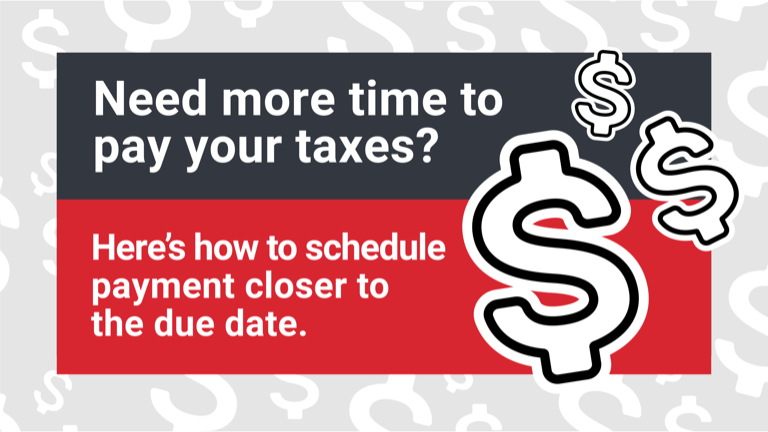The information in this article is up to date for tax year 2023 (returns filed in 2024).
Form W-2, Wage and Tax Statement, is a form sent to employees by their employers that details how much income, Social Security, or Medicare tax was withheld from their annual wages. Each employee earning more than $600 for contracted annual wages or salary will receive one. If you receive this form, use it to file your federal and state tax returns.
What is a W-2 form?
Form W-2 is an official tax document you’ll receive in January or early February at the latest. It has a lot of information, including how much you earned in pay, benefits from your job over the previous 12 months, and how much money was withheld for federal, state, and other types of tax.
The amounts on your W-2 are used to figure out how much of your income is taxable and how much tax you have already paid. Your employer sends one copy to you and one to the IRS. This form is one of the most important that you need to file your taxes.
Who gets a W-2?
Your employer will issue you a W-2 if you’ve earned $600 or more in wages within the last year. If you withheld income (no matter the amount) for Social Security, Medicare, or state and federal taxes, you will also receive a W-2.
On that note, it’s important to update your tax withholding percentage after certain life changes and events. For example, if you’ve recently had a major life event, like getting married or having a baby, you’d want those changes to be accurately reflected on your W-2.
If you forget to make these changes, you can always contact your employer and make the adjustments you need. But if you wait too long, it’s more likely that you may owe taxes.
What should I do with my W-2?
When you receive your W-2 form, it’s time to start filing taxes.
- Use the information on your W-2 to fill out your income tax return. TaxSlayer makes it simple to do this. We will guide you step-by-step through your tax return and ask you very basic questions to get you from start to finish.
- Submit your return before the tax filing due date (typically April 15th). The IRS normally begins accepting returns sometime in January, and returns are processed immediately once they have been received. If you are owed a refund, then the earlier you submit your return, the earlier you will get your tax rebate from the IRS.
- If your W-2 was sent to you by email, you should print a copy for your records. You’ll need to hang on to this and your other tax documents for three years after you file your return.
How do I get my W-2?
Employers are required to file W-2s using Business Services Online by January 31 each year. Similarly, employers must give their employees their W-2s by January 31. If this date falls on a Friday, Saturday, or a legal holiday, then the deadline is the next business date.
How to read a W-2
Your W-2 shows a lot of information about your earnings, your benefits, how much tax you have paid, and how much you still owe. The info on this form is very important, and you’ll need to enter it exactly as it appears when you fill out your tax return. Here is what the boxes on your W-2 mean:
Box A: This should be your Social Security number (SSN)
Box B: This is your employer’s identification number (EIN)
Box C: This is the name and address of your employer
Box D: This box is optional. It may or may not include a code from your employer.
Box E: This should be your legal name
Box F: This should be your legal address
Box 1: This is your total wages plus other compensation for the year.
Box 2: This is the amount of federal income tax that was withheld from your paycheck for the year.
Box 3: This number shows how much of your income was subject to Social Security tax.
Box 4: This is how much Social Security tax was withheld from your paycheck for the year.

Box 5: This number shows how much of your wages were subject to Medicare tax.
Box 6: This is how much Medicare tax was withheld from your paycheck for the year.
Box 7: If you reported tips to your employer, that amount is shown here.
Box 8: If your employer allocates tips, to you that amount is shown here.
Box 10: If you get dependent care benefits from your employer, this amount is shown here.
Box 11: This box is for the Social Security Administration (SSA) to determine if any part of the amounts reported in Boxes 1, 3, or 5 were earned in a prior year. The SSA uses this number to verify that they’ve paid the correct amount of benefits.
Box 12: Your employer can enter a code (or codes) in Box 12 to indicate things like adoption benefits, contributions to an HSA account, nontaxable sick pay, uncollected Social Security or Medicare taxes, etc. If you are unsure what a code means, you can ask your employer or find the description on the list of codes attached to the W-2 here.
Box 13: If the “Retirement plan” box is checked Box 3, it means that special limits may apply to the amount of traditional IRA contributions you can deduct.
Box 14: This box can account for lots of different things, like union dues, health insurance premiums, nontaxable income, and education assistance payments. Your employer can put any description they choose in this box. There aren’t specific codes, so if you are confused about the info in this section, ask your employer for more clarity.
W-2 boxes 2, 4, and 6 explained
- Box 2 – Federal Income Tax Withheld
- Box 4 – Social Security Tax Withheld
- Box 6 – Medicare Tax Withheld
When you earn income in the United States, you are responsible for paying federal income tax, Social Security tax, and Medicare on your wages. If you work as an employee for someone, your employer holds part of each paycheck and sends it to the government to cover your tax bill during the year. This is called tax withholding.
Your employer calculates how much to hold back based on what you filled out on your W-4 when you were hired. The taxes that are withheld from your paychecks are an estimate of the total amount of taxes you owe for the year.
- If too much money was withheld, you will get a refund.
- If there wasn’t enough money set aside to cover your taxes, you will have to pay the difference.
Note: you might also need to pay state and local taxes in addition to federal taxes. These are different for each state. Find out about the tax laws in your state.
What should I do if my W-2 is incorrect?
If you notice that your W-2 has a mistake, there are several steps you can take. First, contact your employer to see if they can issue a corrected W-2. Employers are required to issue corrections as soon as possible.
If for some reason, you’re unable to get a corrected W-2 by the end of February, you can contact the IRS to initiate a complaint. When you do this, the IRS will send your employer a letter requesting that they issue a correction within 10 days.
In the event your employer doesn’t give you a new W-2 in time to file, you can use Form 4852, which serves as a substitute for the W-2.
What happens if employers don’t file a W-2?
If you’re unable to file your employee’s W-2s by the deadline, you can request a 30-day extension using Form 8809. However, you may not get an extension because it is reserved for “extraordinary circumstances or catastrophe,” such as a natural disaster or your records being destroyed in a fire.
Employers filing W-2s late without requesting an extension or those who neglect to file could be subject to federal and state penalties. The federal penalties are listed below. Contact your state’s department of revenue to get information on their late filing penalties.
Late information return penalties for small business owners
Businesses that gross $5 million or less are subject to the following penalties for returns due January through December 31, 2024.
| Length of Delay | Penalty |
| Not more than 30 days late | $60 per overdue statement (up to $220,500 maximum) |
| 31 days late – August 1 | $120 per overdue statement (up to $630,500 maximum) |
| After August 1 or no filing | $310 per overdue statement (up to $1,261,000 maximum) |
| Intentional Disregard | $630 per overdue statement (no limitations on max charge) |
Late information return penalties for large businesses
Businesses whose gross receipts exceed $5 million are subject to the following penalties for returns due January through December 31, 2024.
| Length of Delay | Penalty |
| Not more than 30 days late | $60 per overdue statement (up to $630,500) |
| 31 days late – August 1 | $120 per overdue statement (up to 1,891,500) |
| After August 1 or no filing | $310 per overdue statement (up to $3,783,000) |
| Intentional Disregard | $630 per overdue statement (no limitations on max charge) |
What is the difference between Form W-2 and Form W-2G?
If you gamble, you may be familiar with Form W-2G. This form is sent out by the casino or gambling establishment to report your winnings above a certain dollar amount. Find out more about the tax rules for reporting gambling winnings.
FAQs about Form W-2
Have more questions about Form W-2? Here are some questions that we frequently get asked by our customers!
What is a W-2 form used for?
Form W-2 is used to report how much income an employee earns from their employer. It also reports how much tax was withheld from your paycheck every month. If you receive one, use it to file your federal and state tax return during tax season.
What is the difference between a W-2 and a W-4?
There are a few key differences between Form W-2 and Form W-4. The W-2 is completed by the employer and given to the employee during January for the previous year’s income. The W-4 is filled out by the employee when they first start their new job or when they experience a significant life change (i.e. having a baby or getting married).
These forms are only for salaried employees, not independent contractors. The information the employee fills out on the W-4 directly impacts the amount of taxes withheld throughout the year and reported on the W-2. This information includes marital status, dependents, and any withholding allowances. Another difference is that the W-2 is filed with the Social Security Administration, and the W-4 is not sent to any tax agency.
What is the difference between a W-2 and a tax return?
A W-2 is a record of your wages and the taxes you paid throughout the year that is reported to the IRS and given to you, the employee, so you can fill out your tax return. A tax return is also known as IRS Form 1040.
This is a form that you fill out detailing how much you earned from income or side gigs or dividends, how much tax you paid, any credits or deductions you may be eligible for, and any other tax breaks. Your tax return gives a total picture of your entire year and is reported to the IRS so they can give you a refund or collect any additional tax you may owe.
Do I need a W-2 for my tax return?
Yes, if you worked for an employer as someone who earns wages or a salary, you will need your W-2 to fill out your tax return every year. If you are an independent contractor, you will probably not receive a W-2 and won’t need one for your tax return. Instead, you will receive Form 1099 with this info.
What are the benefits of being a W-2 employee?
As a W-2 employee, you have access to certain benefits not reserved for independent contractors. In exchange for consistent employment, there are certain protections like minimum wage, family and medical leave, potential benefits and insurance programs, and more.
How do I get money back from my taxes?
The money you get back from the IRS after you file your taxes is called a tax refund. To figure out if you should be getting a tax refund, you will need to file a tax return.
This is because the info you enter on your tax return tells the IRS whether your employer withheld too much, too little, or just enough income to cover the taxes you owe. If too much was withheld, you will receive a refund.
You will use tax credits and deductions when you’re filing your tax return to lower your tax liability (the amount you owe). If you don’t have a tax liability, these credits and deductions can help you get a bigger refund.
Is this your first time filing a tax return? Learn why filing is important and what you can do to get started. If you’re ready to file now, TaxSlayer has your back. Get started for free today!




